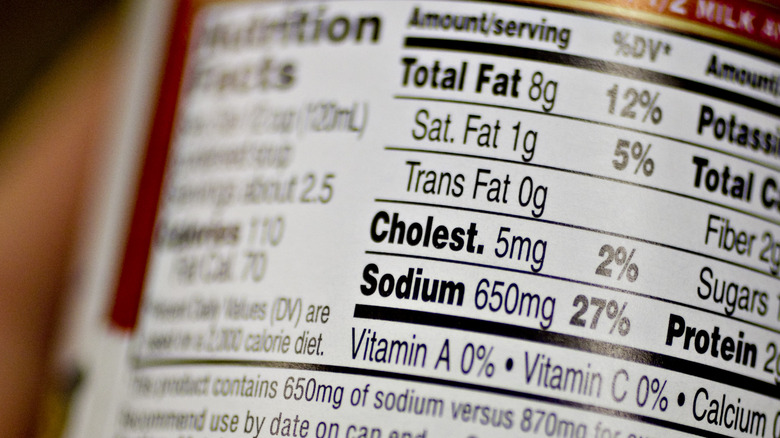Yes, Food Labels Really Do Look Different Than They Did Last Year
While food nutrition labels are one of the most common sights in every grocery store and pantry, decoding all of the intricate information on the label is often a tricky task that can lead to confusion for consumers over just how nutritionally sound their food choices are.
Although the Food and Drug Administration (FDA) — the government body responsible for regulating the nation's food supply, among a host of other responsibilities — has found itself in hot water recently due to its rollbacks of important food regulations, they have taken some progressive actions when it comes to food labeling. Over the past few years, the FDA has slowly been updating requirements for food labels in order to better reflect current scientific information and to make it easier for consumers to make healthy choices. According to the FDA, "the label's refreshed design and updated information will make it easier for you to make informed food choices that contribute to lifelong healthy eating habits."
While the new requirements were first announced in May of 2016 (via CNET), food and drink manufacturers with over $10 million in annual sales were given until January 1, 2020. to adjust their labels to comply with the updated regulations. Companies with less than $10 million in annual sales were given until January 1, 2021, to make the adjustments. The exceptions to this timeline were makers of single-ingredient sweeteners (like maple syrup and honey), as well as producers of certain cranberry products, who were given until July 1, 2021, to make the required changes, per the FDA.
What are some of the biggest new changes to food labels?
Two of the most apparent changes to the new food labels include the size and font in which calories and serving sizes are listed, requiring a larger font and bold type for each measurement. Serving sizes per container have also been updated to reflect the amount the average American typically eats or drinks today (via Healthline).
Another major change to the labels is to the Daily Value (DV) section, which lists how much the nutrients in a serving of food contributes to the average person's daily diet. The FDA has adjusted the daily values of certain nutrients, which will either raise or lower the DV percentage for each listed nutrient contained in the food or drink. As a rule, the FDA considers 5% DV or less of a nutrient per serving a low value, and 20% DV or more of a nutrient per serving a high value.
Other new requirements for labels include sections for added sugars, like sucrose and dextrose, as well as the percentages of vitamin D and potassium (nutrients the FDA claims the average American isn't getting enough of). Meanwhile, calories from fat and vitamin A and C will no longer be required on labels (as deficiencies of these vitamins are rare today, according to the FDA).
While an overhaul of all food labels on American grocery shelves was undoubtedly a huge undertaking, the FDA is hoping that the benefit to consumers' overall health will be well worth the effort.

